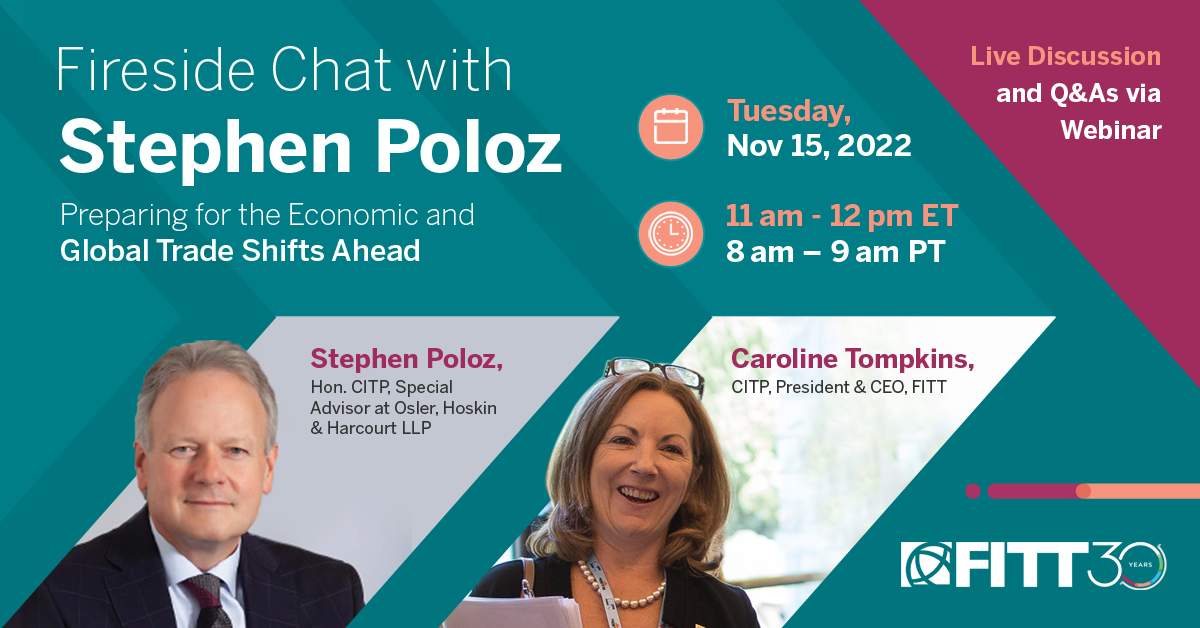 This week, I caught up with patent attorneys Jonathan D’Silva and Bryan Walker of MacDonald Illig Jones & Britton, LLP to hear their perspectives on some key strategic intellectual property (IP) legal issues. Here’s what they shared:
This week, I caught up with patent attorneys Jonathan D’Silva and Bryan Walker of MacDonald Illig Jones & Britton, LLP to hear their perspectives on some key strategic intellectual property (IP) legal issues. Here’s what they shared:
Q1: In your opinion, what are some of the top strategic considerations when deciding whether to register intellectual property internationally?
First and foremost, make sure you have access to advisors who you trust and who know the rules and can make recommendations based on your specific situation. Acting on assumptions can foreclose your rights and options without you even realizing it.
There are no guarantees that registering intellectual property, (‘IP’ includes patents, trademarks, and copyrights – it also includes trade secrets, but you cannot register those) will be a financially successful endeavor.
Registering IP requires a short-term investment in hopes of a long-term payoff.
The costs are usually paid upfront, whereas the benefits are typically realized years later, if at all. This requires making projections and educated guesses, and a business plan is crucial.
Although there are international and multi-national treaties that harmonize certain aspects of IP, it is still highly country-specific. Choosing the countries where IP protection will be sought is a strategic decision, as it is simply impractical to file in every country.
Consider registering your IP in those countries where you market or manufacture your products.
Also consider where your competitors are located, where you compete with them, and particularly where they have their manufacturing capabilities. In addition, each country should be assessed for cost/benefit, such as the size of the market in that country, the barriers to entry for you and your competition, and even the political stability of the country. Simply put: is obtaining IP protection in a particular country worth the investment?
Q2: What is the financial commitment of protecting your IP in international markets?
For patents, filing an international patent application under the PCT (Patent Cooperation Treaty) requires at least a 3 to 4 year time commitment and has several stages, each requiring a financial commitment.
First, there is the initial drafting of a quality PCT patent application that will serve as the basis for what will subsequently filed in all desired countries. Conservatively, budget US$20,000 to US$75,000 for drafting and filing of the PCT patent application. This should include costs for a prior art search and analysis and a draftsman for the drawings.
Second, applicants have up to 31 months (depending on the country) from their first, original filing to decide in which countries to enter the ‘National Stage’, which is often around US$5,000 per country (plus translation costs where needed). This is because patent protection is country-specific.
There is no such thing as an international patent.
Third, in any given country, prosecution of the patent application (the process of taking a filed application through issuance, which is never guaranteed) can take a variable amount of time and money—US$20,000 to US$30,000 or more—depending on the difficulty encountered. The time frame ranges typically from two to five years—sometimes more—from when the patent application enters the National Stage of a particular country to when the patent application is prosecuted.
Finally, you also have to be aware of payment of maintenance fees, which vary by country. Some countries require annual payments even before the patent issues, some require payments after the patent issues, and others require payment over some other schedule. These fees can exceed US$10,000 over the life of the patent in each country.
Enforcement costs of a patent can vary widely, as something as a simple cease-and-desist letter, licensing agreement, or a cross-licensing agreement with a competitor (involving their patents as well) can resolve enforcement issues for as little as a few thousand dollars.
Few patents are ever litigated, but for those that are, the costs can run into the millions.
For trademarks and copyrights, the costs and time commitment are typically a fraction of those required for patents. The processes of registration and enforcement are much simpler and therefore typically cost less.
Q3: In what kinds of international situations is it better to file a patent vs. keeping IP as a trade secret?
Some assets, despite their high value (e.g., customer lists) are not patentable, thus making trade secret protection the obvious decision. For those assets that are patent-eligible subject matter (i.e., process, machine, composition of matter, and article of manufacture), there are several considerations that should be examined in consultation with a patent attorney.
First is duration. Patents are of a limited duration (by international treaty, about 20 years from filing) in all countries, whereas a trade secret can retain its status until it is revealed, which may never happen. Thus, if long-term protection is desired beyond the term afforded by a patent, then a trade secret may be best.
A great example of this is the formula for Coca Cola from 1886, which is still protected as a trade secret.
Second is susceptibility to Reverse-Engineering. A patent must disclose sufficient details to allow others to make and use the invention once the patent expires. By contrast, a trade secret loses its value if competitors can reverse-engineer it, which can leave the trade secret owner without recourse.
Generally, the more susceptible something is to reverse-engineering, the less it would be a viable trade secret.
In addition, if your process involves a combination of elements, some of which are easier to reverse engineer than others, it may be possible to patent those portions of the process that are easier to reverse engineer while maintaining confidentiality on those parts that you can keep secret.
Third, if the trade secret is reverse engineered, this can open up the possibility of competitors filing patents on the trade secret. Some countries recognize a prior-use defense, and this scenario could also raise inventorship issues. Nevertheless, having a competitor file a patent on one’s own trade secret is a nightmare, and can be avoided by pursuing patents instead of trade secret protection at the outset.
Fourth, it may be possible to obtain a patent on something that is currently a trade secret, thus giving up trade secret status. Conversely, a patented invention cannot later become a trade secret.
Fifth, if you have already missed the deadline to allow you to file a patent application on your invention, you may have no choice but to try to keep it as a trade secret.
 Jonathan M. D’Silva is a Partner at the law firm of MacDonald Illig Jones & Britton, LLP in Erie, Pennsylvania. He is the chair of the firm’s Intellectual Property Group and the newly created Emerging Technology Group. Jonathan is a Registered Patent Attorney and admitted to practice law in Pennsylvania, New York, and the District of Columbia. He received his Bachelor of Science and Master of Engineering degrees in Agricultural and Biological Engineering from Cornell University. He received his Juris Doctorate degree from the University at Buffalo School of Law.
Jonathan M. D’Silva is a Partner at the law firm of MacDonald Illig Jones & Britton, LLP in Erie, Pennsylvania. He is the chair of the firm’s Intellectual Property Group and the newly created Emerging Technology Group. Jonathan is a Registered Patent Attorney and admitted to practice law in Pennsylvania, New York, and the District of Columbia. He received his Bachelor of Science and Master of Engineering degrees in Agricultural and Biological Engineering from Cornell University. He received his Juris Doctorate degree from the University at Buffalo School of Law.
 Bryan Walker is a patent attorney for MacDonald, Illig, Jones & Britton LLP. Before this position, he was a Patent Examiner for the U.S. Patent and Trademark Office. Bryan earned both BS and MS degrees in computer science; and started his career in systems administration and software development before earning his law degree from Washburn University.
Bryan Walker is a patent attorney for MacDonald, Illig, Jones & Britton LLP. Before this position, he was a Patent Examiner for the U.S. Patent and Trademark Office. Bryan earned both BS and MS degrees in computer science; and started his career in systems administration and software development before earning his law degree from Washburn University.








disqus comments